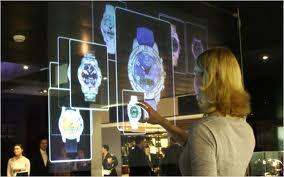Markerless augmented reality (AR) has the potential to provide engaging experiences and improve outcomes across a wide variety of industries; the overlaying of virtual content, or holograms, onto a view of the real world without the need for predefined markers provides great convenience and flexibility. However, unwanted hologram movement frequently occurs in markerless smartphone AR due to challenging visual conditions or device movement, and resulting error in device pose tracking. We develop a method for measuring hologram positional errors on commercial smartphone markerless AR platforms, implement it as an open-source AR app, HoloMeasure, and use the app to conduct systematic quantitative characterizations of hologram stability across 6 different user actions, 3 different smartphone models, and over 200 different environments. Our study demonstrates significant levels of spatial instability in holograms in all but the simplest settings, and underscores the need for further enhancements to pose tracking algorithms for smartphone-based markerless AR.
翻译:无标记扩大的现实(AR)有可能提供参与经验,改善各种行业的成果;将虚拟内容或全息图叠加到现实世界的视野中而不需预先界定标记就提供了极大的便利和灵活性;然而,由于视觉条件或设备移动的挑战,在无标记智能步枪中经常出现不想要的全息图移动,并由此造成的设备跟踪错误。我们开发了一种方法,用于测量商业智能手机无标记AR平台的全息图定位错误,将其作为开放源AR App、HoloMesure,并使用该应用程序对6个不同用户行动、3个不同智能手机模型和200多个不同环境的全息图稳定性进行系统的定量定性。我们的研究显示,除了最简单的环境外,所有情况下的全息图空间不稳定程度相当,并强调需要进一步改进,以便为智能手机无标记的AR提供跟踪算法。



